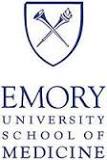TBTC Study 29: Rifapentine During Intensive Phase Tuberculosis (TB) Treatment
| Status: | Completed |
|---|---|
| Conditions: | Infectious Disease, Pulmonary |
| Therapuetic Areas: | Immunology / Infectious Diseases, Pulmonary / Respiratory Diseases |
| Healthy: | No |
| Age Range: | 18 - Any |
| Updated: | 5/5/2014 |
| Start Date: | December 2008 |
| End Date: | December 2013 |
| Contact: | Stefan V Goldberg, MD |
| Email: | ssg3@cdc.gov |
| Phone: | (404) 639-5339 |
TBTC Study 29: Evaluation of a Rifapentine-containing Regimen for Intensive Phase Treatment of Pulmonary Tuberculosis
Protocol Synopsis The goal of this Phase 2 clinical trial is to evaluate the antimicrobial
activity and safety of an experimental intensive phase (first 8 weeks of treatment)
tuberculosis treatment regimen in which rifapentine is substituted for rifampin.
Primary Objective
- To compare the antimicrobial activity and safety of standard daily regimen comprised of
rifampin (approximately 10 mg/kg/dose) + isoniazid + pyrazinamide + ethambutol (RHZE)
to that of an experimental regimen comprised of rifapentine (approximately 10
mg/kg/dose) + isoniazid + pyrazinamide + ethambutol (PHZE).
Secondary Objectives
- To determine and compare for each regimen the time to culture-conversion, using data
from 2-, 4-, 6-, and 8-week cultures (10, 20, 30, 40 doses).
- To determine and compare for each regimen the proportion of patients with any Grade 3
or 4 adverse reactions
- To determine the correlation of the MGIT/BACTEC liquid culture growth index and other
mycobacterial and clinical biomarkers with time to culture conversion and treatment
failure
- To store serum for future assessment of biomarkers of TB treatment response and
hypersensitivity to study drugs.
- To compare adverse events and 2-month culture conversion rates among HIV-infected
patients vs. HIV-uninfected patients
- To determine the tolerability and safety, and estimate the antimicrobial activity, of
experimental regimens that include isoniazid + pyrazinamide + ethambutol plus either
rifapentine 15 mg/kg/dose or rifapentine 20 mg/kg/dose, all administered daily.
Assessment of these doses of rifapentine will be performed as an extension to the main
study after enrollment in the main study has been completed.
Design
This will be a prospective, multicenter, open-label clinical study. Adults suspected of
having pulmonary tuberculosis who meet eligibility criteria will be randomized to receive
either the experimental intensive phase tuberculosis treatment regimen or the standard
intensive phase tuberculosis treatment regimen. Randomization will be stratified by
presence/absence of cavitation on baseline chest radiograph, and by geographic continent.
All doses of study drugs will be given under direct observation and administered 5 days per
week. After a subject completes intensive phase therapy, he/she then will be treated with a
non-experimental continuation phase tuberculosis treatment regimen.
The study extension will be a prospective, multicenter clinical trial. Eligibility criteria
will be the same as for the main study. Participants will be randomized to one of four
regimens: the standard intensive phase treatment regimen, an investigational regimen in
which rifapentine 10 mg/kg/dose is substituted for rifampin, an investigational regimen in
which rifapentine 15 mg/kg/dose is substituted for rifampin, or an investigational regimen
in which rifapentine 20 mg/kg is substituted for rifampin. Randomization will be stratified
by the presence/absence of cavitation on baseline chest radiograph, and by study site. Study
drugs will be administered 7 days per week. After a subject completes intensive phase
therapy, he/she then will be treated with a non-experimental continuation phase tuberculosis
treatment regimen. Subjects will have blood drawn for one pharmacokinetic determination of
rifapentine concentration at or after the week 2 visit during intensive phase therapy.
This study is being conducted in 2 phases.
1. The main study compares a 10 mg/kg dose of rifapentine, open label, against 10 mg/kg
rifampin in an otherwise standard intensive phase regimen of treatment for pulmonary
tuberculosis. The projected sample size was 480 enrollments; 530 patients were
actually enrolled.
2. The study extension evaluates higher doses of rifapentine, with the specific
rifapentine doses (10 mg/kg, 15 mg/kg, and 20 mg/kg) blinded to patients and
clinicians, with data collection and endpoints otherwise similar to the main study.
The projected sample size for the study extension is 320 enrollments.
activity and safety of an experimental intensive phase (first 8 weeks of treatment)
tuberculosis treatment regimen in which rifapentine is substituted for rifampin.
Primary Objective
- To compare the antimicrobial activity and safety of standard daily regimen comprised of
rifampin (approximately 10 mg/kg/dose) + isoniazid + pyrazinamide + ethambutol (RHZE)
to that of an experimental regimen comprised of rifapentine (approximately 10
mg/kg/dose) + isoniazid + pyrazinamide + ethambutol (PHZE).
Secondary Objectives
- To determine and compare for each regimen the time to culture-conversion, using data
from 2-, 4-, 6-, and 8-week cultures (10, 20, 30, 40 doses).
- To determine and compare for each regimen the proportion of patients with any Grade 3
or 4 adverse reactions
- To determine the correlation of the MGIT/BACTEC liquid culture growth index and other
mycobacterial and clinical biomarkers with time to culture conversion and treatment
failure
- To store serum for future assessment of biomarkers of TB treatment response and
hypersensitivity to study drugs.
- To compare adverse events and 2-month culture conversion rates among HIV-infected
patients vs. HIV-uninfected patients
- To determine the tolerability and safety, and estimate the antimicrobial activity, of
experimental regimens that include isoniazid + pyrazinamide + ethambutol plus either
rifapentine 15 mg/kg/dose or rifapentine 20 mg/kg/dose, all administered daily.
Assessment of these doses of rifapentine will be performed as an extension to the main
study after enrollment in the main study has been completed.
Design
This will be a prospective, multicenter, open-label clinical study. Adults suspected of
having pulmonary tuberculosis who meet eligibility criteria will be randomized to receive
either the experimental intensive phase tuberculosis treatment regimen or the standard
intensive phase tuberculosis treatment regimen. Randomization will be stratified by
presence/absence of cavitation on baseline chest radiograph, and by geographic continent.
All doses of study drugs will be given under direct observation and administered 5 days per
week. After a subject completes intensive phase therapy, he/she then will be treated with a
non-experimental continuation phase tuberculosis treatment regimen.
The study extension will be a prospective, multicenter clinical trial. Eligibility criteria
will be the same as for the main study. Participants will be randomized to one of four
regimens: the standard intensive phase treatment regimen, an investigational regimen in
which rifapentine 10 mg/kg/dose is substituted for rifampin, an investigational regimen in
which rifapentine 15 mg/kg/dose is substituted for rifampin, or an investigational regimen
in which rifapentine 20 mg/kg is substituted for rifampin. Randomization will be stratified
by the presence/absence of cavitation on baseline chest radiograph, and by study site. Study
drugs will be administered 7 days per week. After a subject completes intensive phase
therapy, he/she then will be treated with a non-experimental continuation phase tuberculosis
treatment regimen. Subjects will have blood drawn for one pharmacokinetic determination of
rifapentine concentration at or after the week 2 visit during intensive phase therapy.
This study is being conducted in 2 phases.
1. The main study compares a 10 mg/kg dose of rifapentine, open label, against 10 mg/kg
rifampin in an otherwise standard intensive phase regimen of treatment for pulmonary
tuberculosis. The projected sample size was 480 enrollments; 530 patients were
actually enrolled.
2. The study extension evaluates higher doses of rifapentine, with the specific
rifapentine doses (10 mg/kg, 15 mg/kg, and 20 mg/kg) blinded to patients and
clinicians, with data collection and endpoints otherwise similar to the main study.
The projected sample size for the study extension is 320 enrollments.
Inclusion Criteria:
1. Suspected pulmonary tuberculosis with acid-fast bacilli in a stained smear of
expectorated or induced sputum.
2. Willingness to have HIV testing performed, if HIV serostatus is not known or if the
last documented negative HIV test was more than 3 months prior to enrollment.
3. 5 (five) or fewer days of multidrug therapy for tuberculosis disease in the 6 months
preceding initiation of study drugs.
4. 7 (seven) or fewer days of fluoroquinolone therapy in the 30 days preceding
initiation of study drugs.
5. Age >= 18 years
6. Karnofsky score of at least 60 (requires occasional assistance but is able to care
for most of his/her needs; see Appendix B)
7. Signed informed consent
8. Women of child-bearing potential must agree to practice an adequate (barrier) method
of birth control or to abstain from heterosexual intercourse during study therapy.
9. Laboratory parameters done within 14 days prior to, enrollment:
- Serum or plasma alanine aminotransferase (ALT) activity ≤ 3 times the upper
limit of normal
- Serum or plasma total bilirubin level ≤ 2.5 times the upper limit of normal
- Serum or plasma creatinine level ≤ 2 times the upper limit of normal
- Complete blood count with hemoglobin level of at least 7.0 g/dL
- Complete blood count with platelet count of at least 100,000/mm3
- Negative pregnancy test (women of childbearing potential)
Exclusion Criteria:
1. Pregnant or breast-feeding
2. Known intolerance or allergy to any of the study drugs
3. Concomitant disorders or conditions for which isoniazid (INH), rifamycins,
pyrazinamide (PZA), or ethambutol (EMB) are contraindicated. These include severe
hepatic damage, acute liver disease of any cause, and acute uncontrolled gouty
arthritis.
4. Current or planned therapy, during the intensive phase of TB therapy, with
combination antiretroviral therapy for HIV, or with cyclosporine or tacrolimus.
Cyclosporine and tacrolimus have unacceptable interactions with rifamycins.
5. Pulmonary silicosis
6. Central nervous system TB
7. Weight < 40 kg or > 85 kg
We found this trial at
23
sites
Duke Univ Med Ctr As a world-class academic and health care system, Duke Medicine strives...
Click here to add this to my saved trials
Emory University School of Medicine Emory University School of Medicine has 2,359 full- and part-time...
Click here to add this to my saved trials
Boston Med Center Boston Medical Center (BMC) is a 496-bed academic medical center located in...
Click here to add this to my saved trials
Northwestern University Northwestern is recognized both nationally and internationally for the quality of its educational...
Click here to add this to my saved trials
Click here to add this to my saved trials
Click here to add this to my saved trials
Click here to add this to my saved trials
Click here to add this to my saved trials
Click here to add this to my saved trials
University of California at San Diego UC San Diego is dedicated to the advancement of...
Click here to add this to my saved trials
Click here to add this to my saved trials
733 North Broadway
Baltimore, Maryland 21205
Baltimore, Maryland 21205
(410) 955-3182

Johns Hopkins University School of Medicine Johns Hopkins Medicine (JHM), headquartered in Baltimore, Maryland, is...
Click here to add this to my saved trials
Click here to add this to my saved trials
Click here to add this to my saved trials
Click here to add this to my saved trials
Click here to add this to my saved trials
Click here to add this to my saved trials
Click here to add this to my saved trials
Click here to add this to my saved trials
Click here to add this to my saved trials
Click here to add this to my saved trials
Click here to add this to my saved trials
Click here to add this to my saved trials




